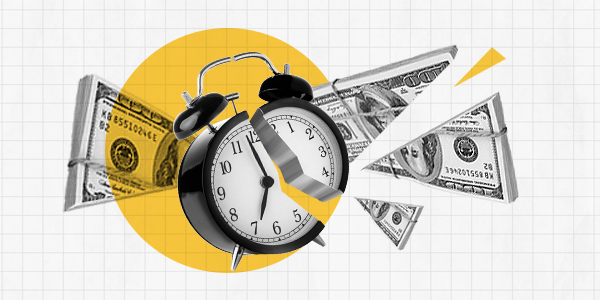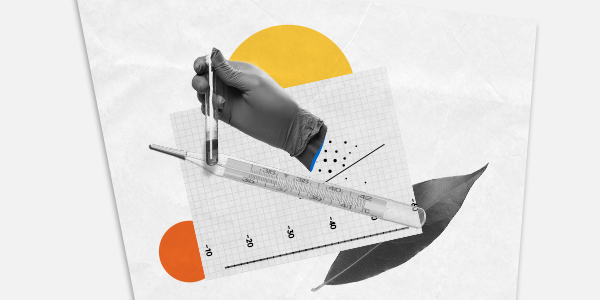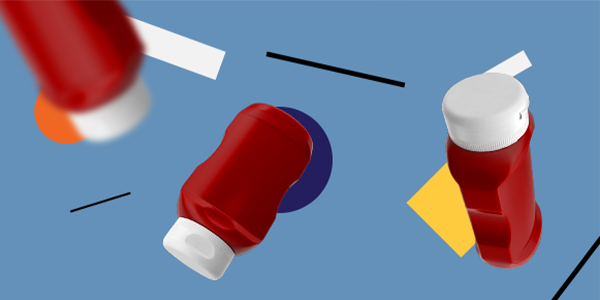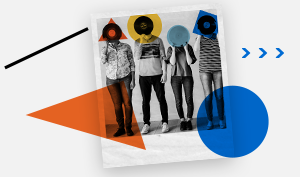 Robert Beiser is the Director of the Strategic Initiative on Sex Trafficking at Polaris. Robert spent several years at Microsoft then left the tech world to work in the non-profit sector as a social justice advocate. He has worked in anti-trafficking advocacy for over 11 years and helped dramatically increase the number of sex trafficking survivors connecting with support services in Washington State. Previous to his work at Polaris, Robert was the Executive Director of Seattle Against Slavery. He holds a master's degree in Public Affairs from the University of Washington, served on the Washington State Task Force on Human Trafficking, and travels internationally presenting on technology and human trafficking prevention. Robert has appeared on the BBC, CNN, and NPR, as well as in USA Today, Wired, the Guardian, and the New York Times.
Robert Beiser is the Director of the Strategic Initiative on Sex Trafficking at Polaris. Robert spent several years at Microsoft then left the tech world to work in the non-profit sector as a social justice advocate. He has worked in anti-trafficking advocacy for over 11 years and helped dramatically increase the number of sex trafficking survivors connecting with support services in Washington State. Previous to his work at Polaris, Robert was the Executive Director of Seattle Against Slavery. He holds a master's degree in Public Affairs from the University of Washington, served on the Washington State Task Force on Human Trafficking, and travels internationally presenting on technology and human trafficking prevention. Robert has appeared on the BBC, CNN, and NPR, as well as in USA Today, Wired, the Guardian, and the New York Times.
Named after the North Star, an historical symbol of freedom, Polaris works to reshape the systems that make sex and labor trafficking possible and profitable in North America. For more than a decade, Polaris has assisted thousands of victims and survivors through the U.S. National Human Trafficking Hotline and built the largest known U.S. data set on the crime. They work both to respond on behalf of survivors to situations of exploitation, and also work on the systems and structures that allow people who are vulnerable to be exploited in the first place.
In this conversation, Kelly and Robert discuss how a scientific perspective on human behavior can help us break through this seemingly intractable problem.
KEY TAKEAWAYS ON…
HOW BEHAVIORAL SCIENCE CAN INFORM OUR UNDERSTANDING OF HUMAN TRAFFICKING
Robert Beiser: Fundamentally, when most folks think about the issue of human trafficking, for many people, their first thought is around international smuggling of people for the purpose of compelled work, or compelled prostitution. That might be because a victim is threatened, that might be physical violence, where a person has been physically harmed over and over again, to get them to perform work or be in prostitution, or commercial sex. Or, it might be that the person is tricked, and then they're trapped in a situation where they might be in a country that they don't know, where they don't know the language, or they just don't have a way to navigate out of the situation. In the trafficking, legal space, we call those force, fraud and coercion. For most folks, they think about it internationally, and as happening more in developing countries, but maybe not as much in developed or industrialized countries.
I work solely on trafficking that happens in the United States. And I have worked solely on sex trafficking. Here, what we see is the vast majority of sex trafficking that happens is with people born and raised in the United States. Certainly, there are some people who come from other countries and end up being exploited. There are some people who are brought from other countries to the United States, specifically with the purpose of being exploited. But the vast majority of what we see both people needing help, and the people who end up being engaged in criminal investigations are people who are experiencing systemic disadvantages that makes them vulnerable for being targeted by traffickers.
The behavioral science piece around that is understanding that this is a system that has somewhat predictable characteristics, and that the people who are involved in that system, whether it's the person who's doing the trafficking, whether it's the person who's buying sex from a trafficking victim, or it's that person who's being exploited as a victim of trafficking, that all of those folks have predictable, if not necessarily rational, motivations and actions that they're going to take.
One of the key pieces here is the fact that this isn't detached from other social influences. If you have a person who isn't able to get money to take care of their family, they might take a risk that puts them in one of those trafficking situations that someone who is stable and has the money to take care of their family might not take. Similarly, if you have a person who doesn't feel like they can take care of their family, through access to legal jobs, that same person might look to exploit another person to get that stability for their own family, especially if they've had experiences where they've been exploited or experienced violence themselves. When we pull the data out of who is involved in buying commercial sex from trafficking victims, exploiting people on commercial sex or being exploited themselves, we end up seeing these fairly predictable trends around people who are black, indigenous and people of color being exploited along lines of not just race and ethnic identity, but also along economic lines. And we see disproportional exploitation by people who are higher economic classes and men who feel that they have more power and entitlement to access their needs from other people.
Those open up a whole set of doors into understanding why some people are buying sex from trafficking victims and some people aren't. Why some people are trafficking or exploiting people in their community and why some people wouldn't do that, and why some people would be in a trafficking situation, whereas other people in their community with seemingly parallel situations aren't being exploited and aren't being trafficked. Sometimes you could say it's luck and or its fate, but behavioral economics says that it's luck and fate that has math.
If we say these are the predictive measures, what are the things that can flip a ‘might exploit’ to a ‘might not exploit’? Once we figure out some of those underlying pieces, then we've figured out an intervention that may be able to create that. Then we have to figure out how do we scale that? How do we amplify or boost it?
Kelly Peters: Awesome. I want to replay that from a methodological perspective, to highlight some of the key phases, so people can understand this process of application of behavioral science. Some of the key points are starting with a very different starting point around impacting and influencing behavior. You talked about moving away from outdated assumptions about what drives good behavior and bad behavior. You talked about challenging the assumptions of what makes a good person a good person, or a bad person a bad person. And you said in the process of behavioral science brought a much more nuanced understanding of who the people are. Which then brings us to a much more fulsome conversation about what are the different enablers amongst these different groups, which then in turn provides the opportunity to develop a new set of interventions to target them.
Those interventions go beyond some of the intuitive approaches that we might think about using and instead bringing the strategies and tactics from behavioral economics that include the nudge, but also shoves other approaches to impacting and influencing behavior that is much richer around understanding personal identity, around understanding emotions, looking at moral decision making and how these factors and other factors weigh in differently, at different times, and then ultimately subjecting these programs to testing and impact evaluation to see if we're able to influence behaviour.
HOW STRUCTURAL INEQUALITIES CREATE PREDICTABLE RISK FACTORS
Kelly Peters: The other part of this value equation that you also raised, is helping the victims, that's another area of work that you've been devoted to. You want to talk more about that side?
Robert Beiser: I think in that area, the awareness of structural inequalities and structural barriers, has really become a critical focal point of how Polaris is framing the issue of trafficking.
For a long time, there was a real, sincere need to explain human trafficking and just have people be able to repeat back what we were saying when we said human trafficking, or what they were seeing in the world that they could identify as human trafficking. But then people's basic assumptions around why or how that was happening, really left out the structural barriers affecting victims.
In the health care world, folks are just now coming to grips with the fact that growing up and experiencing blackness in the United States has different health outcomes, growing up and experiencing being Native American or Indigenous in the United States has different health outcomes. In the anti-trafficking space, we're saying, hey, if you grew up LGBTQ, if you grew up as an immigrant or first-generation immigrant in this community, there are things that are acting upon you that are impacting you and putting you at risk. Until the folks in the anti-trafficking movement are more clear and talking about that, the interventions that folks come up with are just not effective at keeping people safe. The types of outreaches and the support that are offered to prevent trafficking, both upstream and re-victimization and people coming out of trafficking situations won’t be sufficient and won’t be accurately targeted.
HOW KNOWLEDGE OF HOT AND COLD STATES CHANGES HOW WE THINK ABOUT BEHAVIOR
Kelly Peters: Could you share some of the things that stood out the most to you, what have been some of the highlights in this journey?
Robert Beiser: In terms of concepts, hot and cold state interventions, that's the thing that among the team at Polaris that really stood out. There's a psychological principle where once you hear about something, then you see it everywhere in the world. All of us became like hot and cold state self-analysts, where we were seeing and thinking about it everywhere. I think that understanding that people aren’t as individuals just one thing. At certain times we're functioning in one way, and at other times we can be functioning in another way, and that interventions need to be tailored to where we think people are going to be at the time that the intervention is being presented. Also, that we can move people to the state that is more receptive to receive different types of interventions. And that, again, has to do with potential victims of trafficking, people who are buying sex from trafficking victims, and traffickers. These are all people who function in various modalities.
I think that those types of principles have really been impactful on the way that we examine things which carries long past the project we did, which was very specific. We're just continuing to use the same sort of outcomes and lessons learned and applying them to a number of other situations and decision-making opportunities that we have at Polaris.
Kelly Peters: That's fantastic. I think that the presentation on hot and cold states as a first principle, and looking at how those context affects matter, helps us to understand that our individual behaviors are often shaped by seemingly, superficial, in-the-moment impulses. Our strategies ought to make a good distinction between these context factors versus how a person is more permanently wired. If we're able to make that distinction, it allows us to be more effective, it doesn't make us guilty of that fundamental attribution error that a bad person is always a bad person, but rather, some of the time, good people make very bad decisions. And if we can stop them from making very bad decisions, it changes our approach to the tools and interventions that we'll use to make a difference.
Join us for the 2021 BEworks Summit - Shaping the Future using the Science of Behavior - where leading behavioral experts explore how BE is shaping the next frontier of Company, Employee, and Consumer behavior. Register today and we'll see you on Tuesday, 5th October from 11 AM to 3 PM. Click the link here to register.










